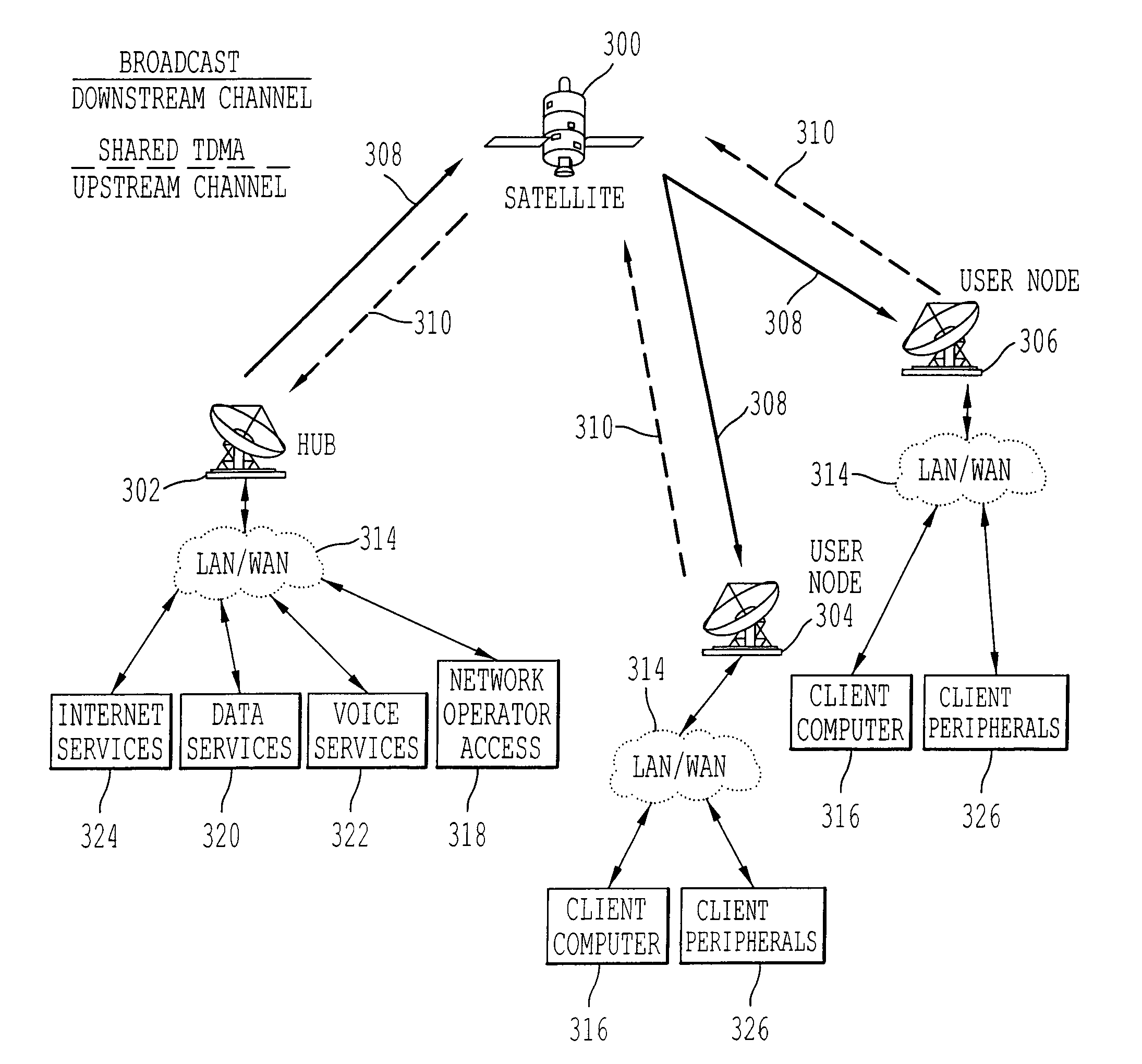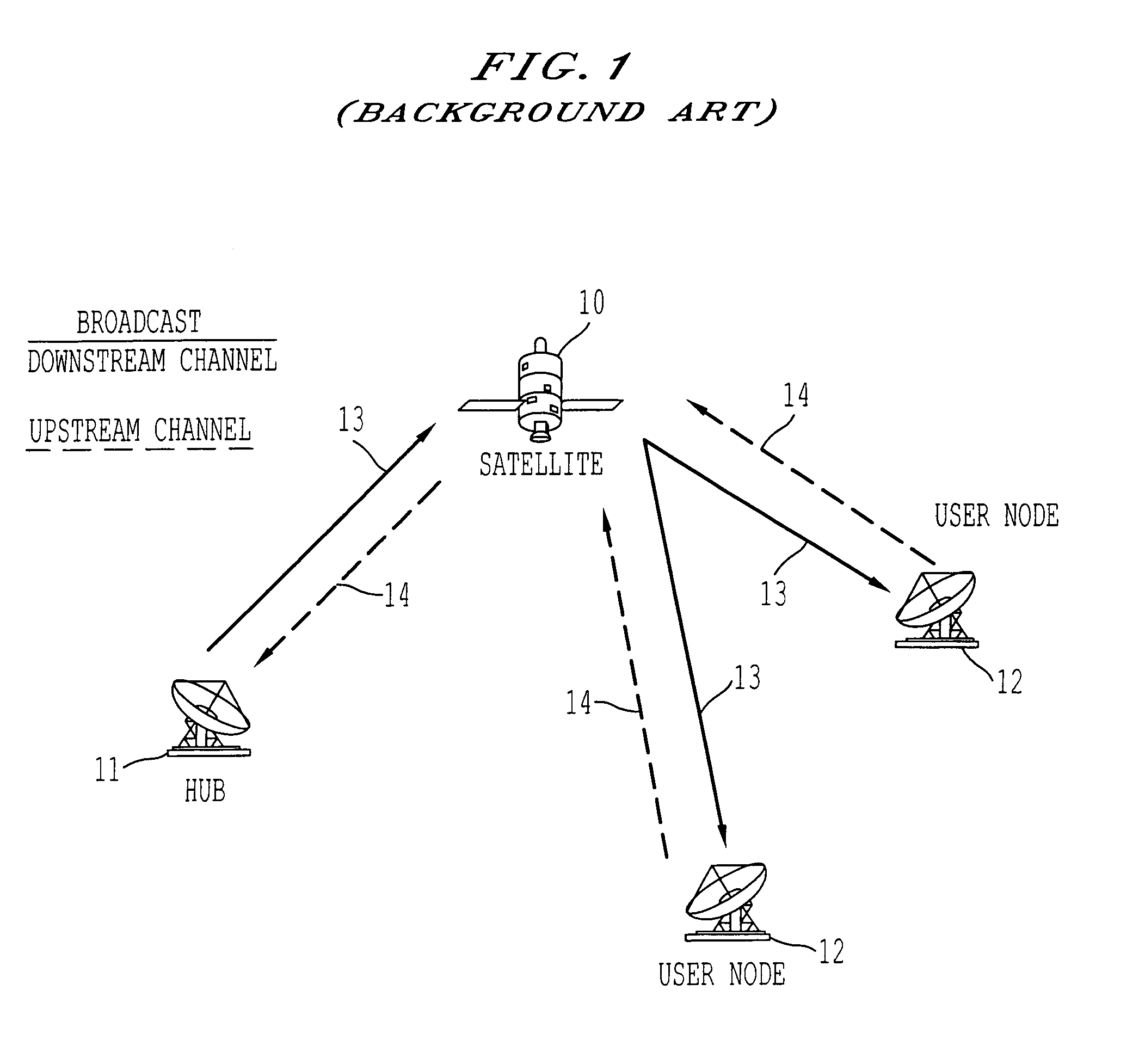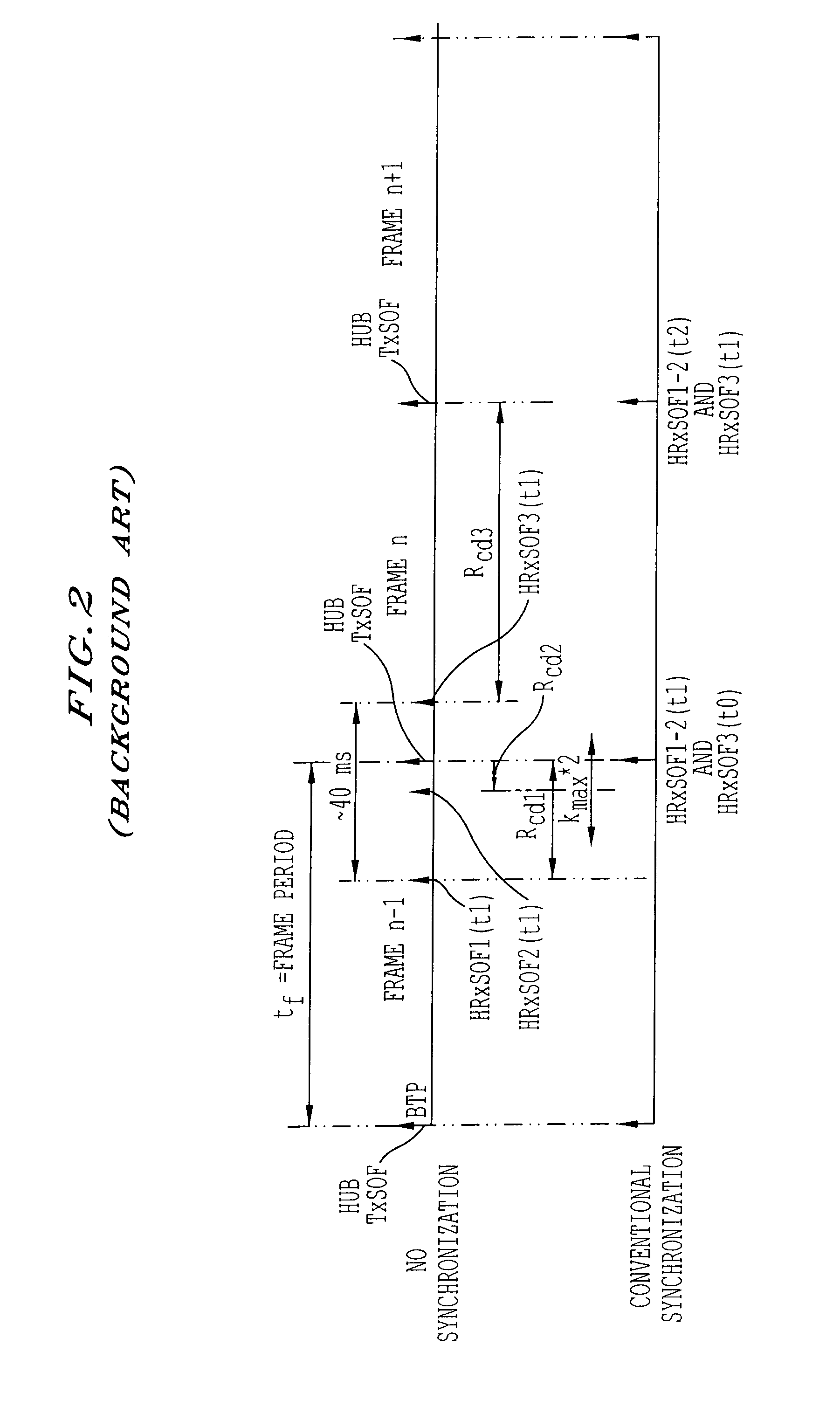Method, apparatus, and system for transmitting control information in a communication network
a communication network and control information technology, applied in the field of satellite communication networks, can solve the problems of channel being subject to further attenuation, radio frequency (rf), and extremely long one-way delay, and achieve the effect of reducing the effective data rate of the link, wasting bandwidth, and reacting quickly
- Summary
- Abstract
- Description
- Claims
- Application Information
AI Technical Summary
Benefits of technology
Problems solved by technology
Method used
Image
Examples
example demand
Assignment Decision Process Explanation[0113]Two upstream carriers with 100 slots per frame each results in 200 slots available for the current frame.[0114]235 slots requested so DA will have to make a decision.[0115]Per the Example Prioritization Rules, the Minimum Data Rate is satisfied first for all nodes regardless of their current demand. Since a single slot represents 1 kbit of data, a minimum rate rule of 10 kbps is satisfied by allocating at least one slot per frame.[0116]one slot contains 1000 data bits.
Example slot allocation after satisfying the minimum data rate constraint:
[0117]
NODESlotsA1slotB2slotsC1slotD5slotsE1slotF2slotsG1slotH5slots
A total of 18 slots have been allocated in this example and 182 slots remain free.[0118]Per the prioritization rules, CIR is satisfied next.[0119]Node D is requesting 10 slots which equates to 100 kbps. Node D's CIR flag is checked and is allowed a CIR of 100 kbps. Node D has already been allocated 5 slots to satisfy it's minimum rate r...
PUM
 Login to View More
Login to View More Abstract
Description
Claims
Application Information
 Login to View More
Login to View More - R&D
- Intellectual Property
- Life Sciences
- Materials
- Tech Scout
- Unparalleled Data Quality
- Higher Quality Content
- 60% Fewer Hallucinations
Browse by: Latest US Patents, China's latest patents, Technical Efficacy Thesaurus, Application Domain, Technology Topic, Popular Technical Reports.
© 2025 PatSnap. All rights reserved.Legal|Privacy policy|Modern Slavery Act Transparency Statement|Sitemap|About US| Contact US: help@patsnap.com



